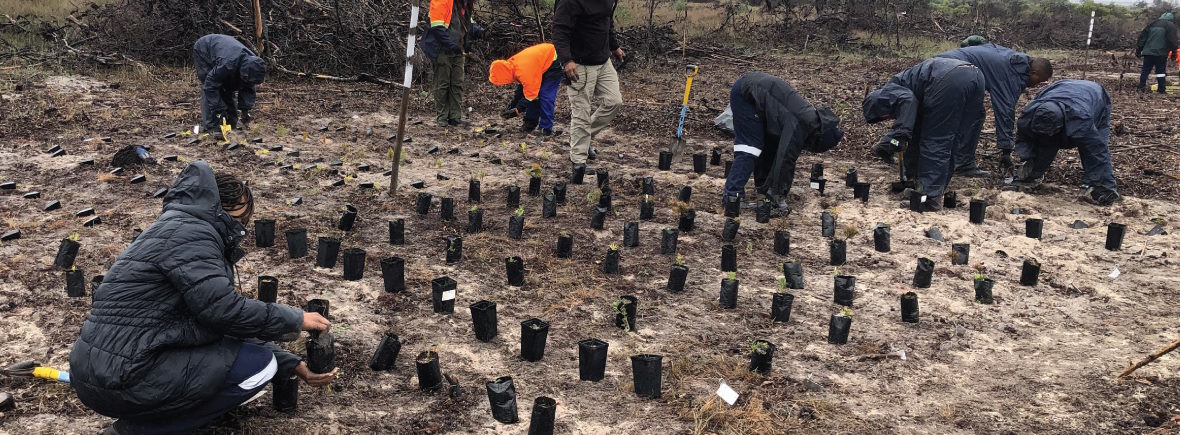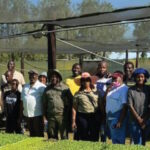
Research-implementation collaboration aims to improve ecological restoration efficiency
Concerted efforts are needed to mitigate widespread impacts of human activity on the planet’s ecosystems. However, figuring out how to restore biodiversity to degraded ecosystems at scale takes a monumental collaborative effort.
In early June 2024, a team of highly motivated individuals and organizations, led by Profs. Karen Esler and Pat Holmes of the Department of Conservation Ecology & Entomology, completed the active planting of 20 ecological restoration plots across 4 hectares in a threatened habitat. This phase focused on species of conservation concern and those that have proved challenging to reintroduce in the past.
It sounds simple, but there has been much behind the scenes to get to this point.
First, dense alien trees had to be removed. The team received assistance from VULA Environmental Services (a landscape restoration and rehabilitation company) and the City of Cape Town (which manages Blaauwberg Nature Reserve).
Second, areas needed to be pre-prepared and pre-sown with habitat companion species (all hand collected by the project participants, over several months).
Third (and this takes time and its own set of complexities) tricky rare Cape Flats Sand Fynbos species were propagated at scale using different methods. Since 2022, propagation has occurred across three nurseries: VULA, FynbosLIFE (an NPO concerned with Cape ecosystem recovery), and Stellenbosch University’s Botanical Garden.
Fourth, with the help of enthusiastic students, thousands of these plants were transported to the site, counted, planted, and watered.
Fifth, we will wait and watch. By doing so, we hope to develop best-practice guidelines for recovering this precious ecosystem.
Collaborative projects that link research and its application are key to scaling up ecological restoration efforts, as they ensure that best-practice applied work gets done. These collaborations combine the resourcefulness, creativity, and context-specific knowledge of natural resource decision-makers, managers, and practitioners with the research process, making the outcomes more likely to have traction. However, actionable research in the context of such long-term collaborations is rare. This makes the collaborative research in Sand Fynbos vegetation at Blaauwberg Nature Reserve a relatively unique endeavor. The partnership between Profs. Esler and Holmes at Stellenbosch University and the City of Cape Town has been underway since 2012.
Funding from the Anglo-American Nature Positive Fund (2022-2025), represents the third phase of this collaborative operational and academic research focused primarily on Blaauwberg Nature Reserve, a protected area north of the City. The reserve encompasses 1500 hectares of lowland vegetation including 500 hectares of critically endangered Cape Flats Sand Fynbos, the majority of which is highly degraded by dense stands of the alien Australian wattle, Acacia saligna.
For more information about the collaboration, contact kje@sun.ac.za
Article and Photos supplied by Prof Karen Esler



